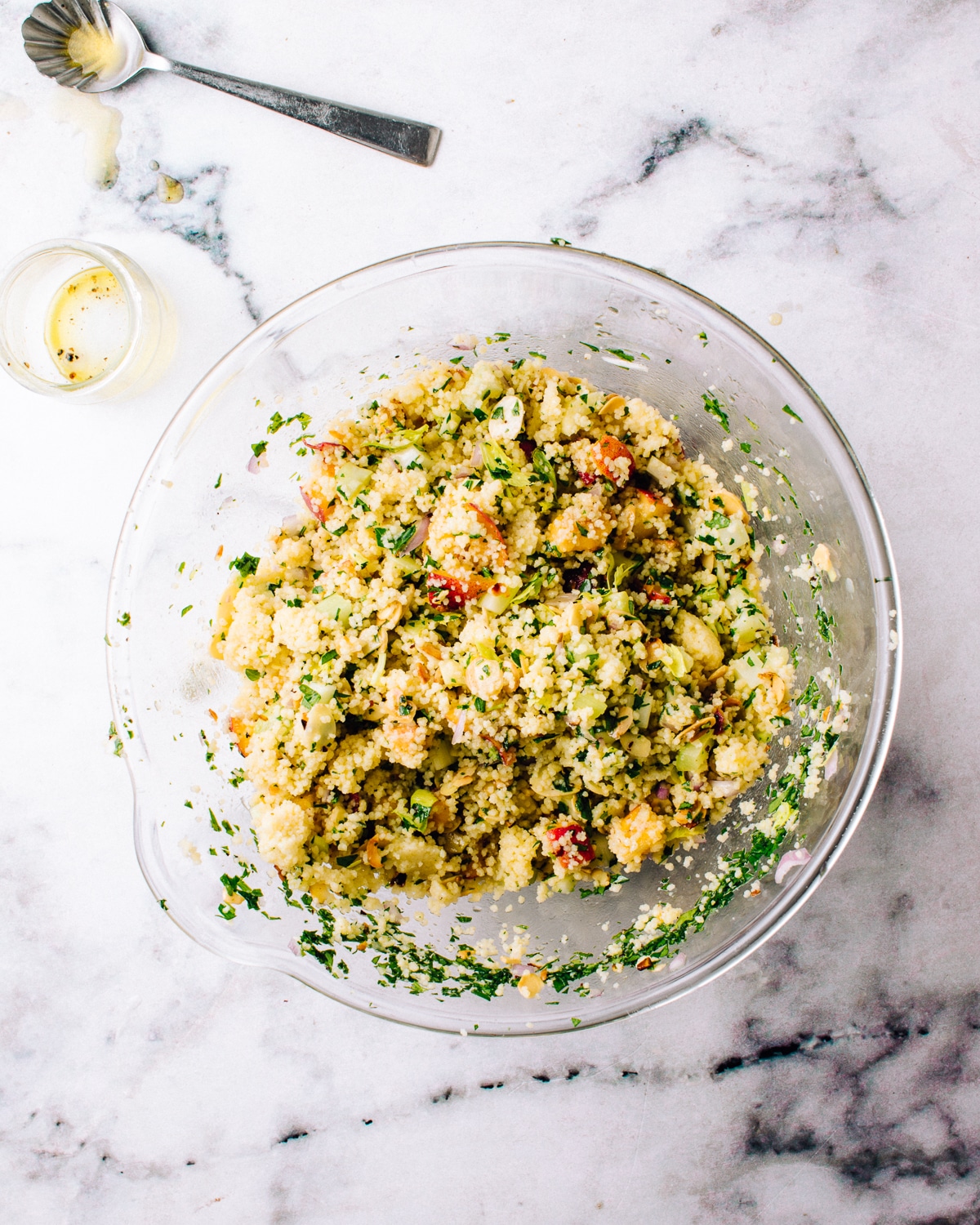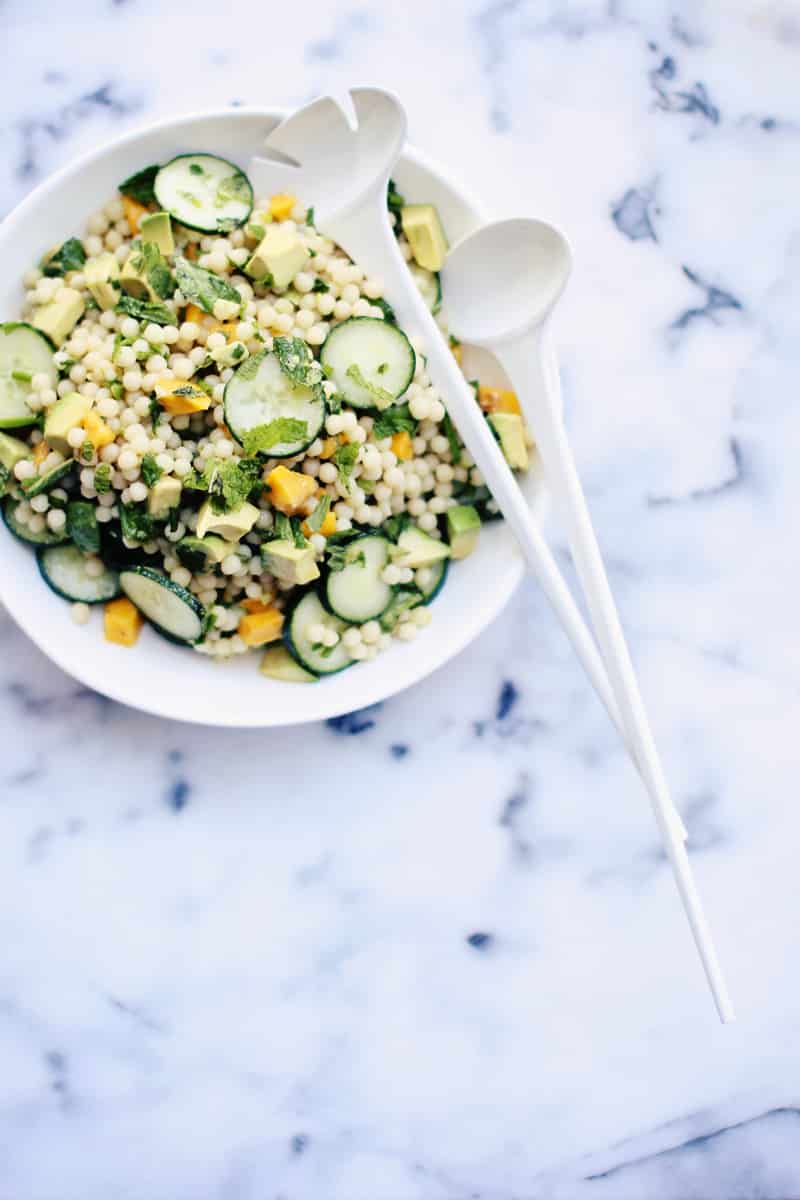Couscous Vs Pasta (The comparison might surprise you!)
Feb 26, 2024, Updated Apr 10, 2024
Couscous vs pasta: A dietitian unpacks the (perceived?) differences and if one is actually healthier.

Here is what you need to know about couscous and pasta – how they differ in terms of health and other key features.
What’s The Difference Between Couscous And Pasta?
A common misconception about couscous is that it is a whole grain. Couscous actually IS just a type of pasta. Teeny, tiny pasta. Go figure.
Couscous and (other) pasta are both staple foods in many cuisines, but they have several differences:
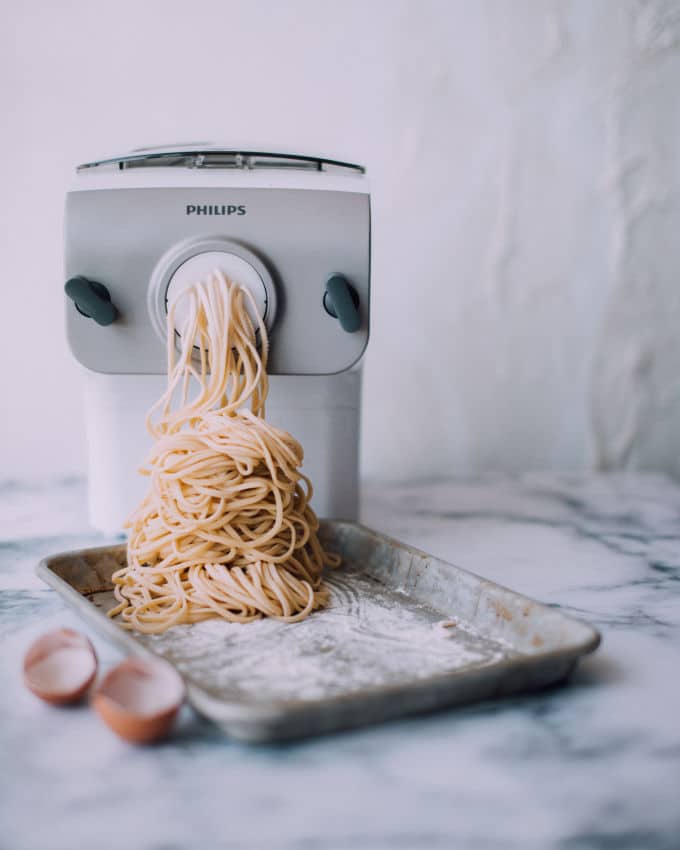
Ingredients
Pasta is typically made from wheat flour, water, and sometimes eggs. It can also be made from alternative grains like rice, quinoa, or corn.
Couscous, on the other hand, is produced from semolina flour, which is a type of white flour made from durum wheat.
You can also buy a whole wheat couscous variety, but by default, it’s a white flour product.
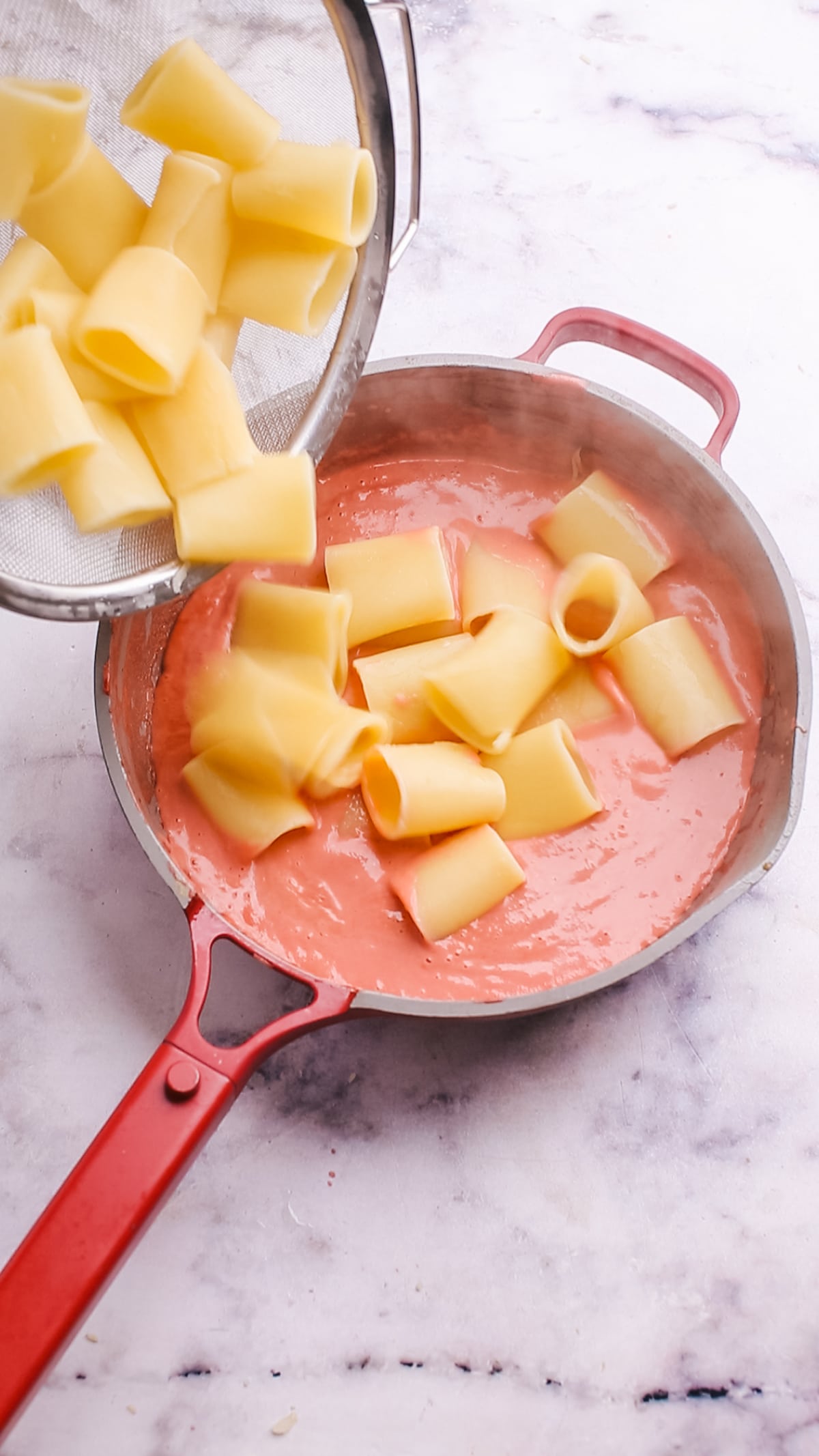
Texture and Shape
Pasta comes in various shapes and sizes, such as spaghetti, penne, fusilli, or lasagna sheets. It has a firmer texture and a chewy consistency when cooked.
Couscous is much smaller in size and has a granular, grain-like texture.
It is more akin to a small grain or a tiny pellet. It’s similar in appearance to quinoa, which is why it’s easily mistaken for a grain of its own.
Note: Despite similar appearances, quinoa is in a totally different category from couscous. It’s a complete protein containing all essential amino acids and is considered a superfood.
There’s another type of couscous, called Israeli couscous or pearl couscous, that is larger in size and has a chewier texture.
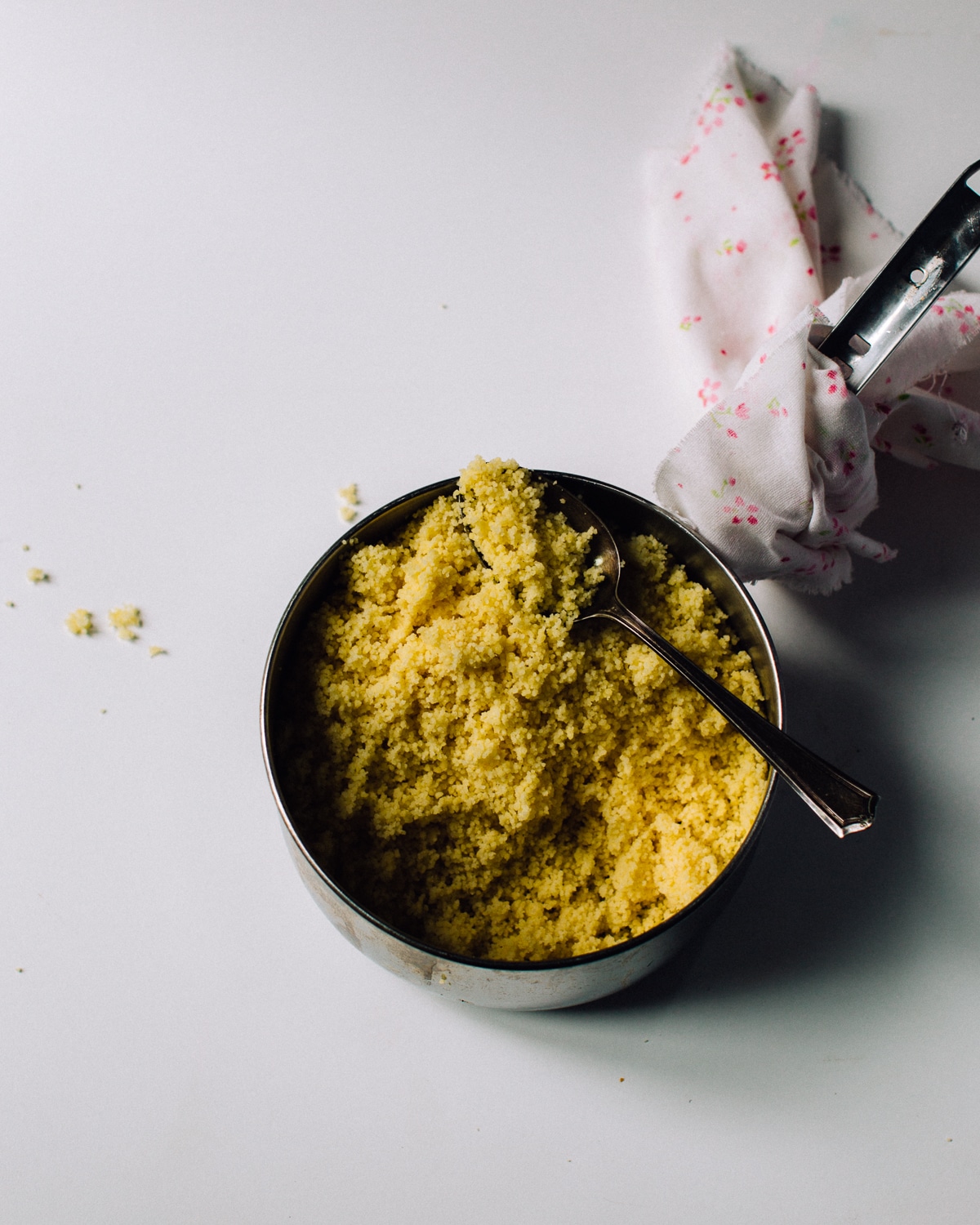
Preparation Style/Method
Pasta is typically boiled in water until it becomes tender, then drained before being served with sauce, cheese, or other accompaniments.
Couscous, however, is not boiled like pasta. It is traditionally steamed or soaked in hot water to rehydrate it.
Origins
Pasta originated in Italy and is a staple in Italian cuisine, although it is now popular all around the world and cooked in tons of different ways.
Couscous is a staple in North Africa, particularly in Morocco, Algeria, and Tunisia.
Moroccan couscous, for example, is served with a stew on top. The stew can have meat, vegetables, or both, and is richly flavored with cumin, cinnamon, and saffron.
Couscous is also a popular side dish in north america, eaten like you would rice.

Is Couscous Healthier Than Pasta?
No, couscous is not healthier than pasta: that’s the short answer. As a dietitian, I would compare the protein, calories, carbs, vitamins and minerals, fiber, and glycemic load to assess the difference.
In these comparison points of couscous vs pasta – they are much the same.
Both of these carbohydrates are made with white flour of similar nutrient quality, with similarly high glycemic loads.
Whole-wheat Couscous vs. Pasta
Whole wheat pasta or couscous, on the other hand, is a medium glycemic load, which means it contributes to more stable blood sugar levels over a longer period.
Whole wheat or whole grains are a good source of vitamin B, as well as fiber, that are not available in white pasta and couscous.
A whole-wheat flour version of either has more to offer than its standard white version.
Bottom line on Nutrition
As an ingredient, couscous vs pasta are basically the same. The “healthiness” of one over the other will depend more on the sauce and other ingredients it is cooked with.
Another factor is serving sizes, of course.
How To Cook Couscous
Cooking couscous is a relatively simple process that involves just a few steps.
Here’s what you need to know about the couscous water ratio as well as how much couscous per person. about cooking couscous and all you need to know.
- Measure couscous and water or broth.
- Boil water or broth in a pot. Add salt or oil if desired.
- Remove from heat, add couscous, and stir. Cover the pot.
- Let it sit off heat for 5 minutes to absorb liquid.
- Fluff couscous with a fork to separate grains.
- Serve as desired, whether as a side or a base for other dishes.
Keep in mind that these are the basic steps for cooking plain couscous. You can also add additional flavorings or ingredients, such as herbs, spices, dried fruits, or nuts, to customize the dish according to your preferences.
Couscous can also be steamed in a couscoussier, a traditional North African steamer, for a more authentic preparation method.
Couscous Recipes To Try
Here are a few of my favorite couscous recipes for you to try:
- Easy couscous salad with lemon dressing
- Grilled chicken couscous with peaches and mint
- Beet and Citrus Salad (with pearl couscous)
- The best Israeli Couscous Recipes
These recipes are light and bright, and packed with delicious flavor.
How to Cook Pasta
Here’s a quick guide to cooking pasta:
- Boil water in a large pot. Use about 4 quarts of water for every pound of pasta.
- Add salt. This flavors the pasta. It should taste salty like the sea.
- Add pasta to boiling water. Stir occasionally to prevent sticking.
- Cook according to package instructions, usually between 8-12 minutes. Aim for al dente, which means it’s still firm when bitten.
Favorite Pasta Recipes To Try:
- Seafood Pasta with Cream Sauce
- Spaghetti with Meat Sauce
- Lobster Ravioli with the Best Sauce
- Lazy Lasagna Recipe
FAQS
Are you skimming through? Here’s the lowdown from this article:
What is couscous, and how does it differ from pasta?
Couscous is a traditional North African dish made from semolina wheat flour, while pasta is an Italian staple typically made from wheat flour, water, and sometimes eggs.
Couscous has a granular, grain-like texture, while pasta comes in various shapes and sizes with a firmer, chewier texture.
Couscous vs pasta – which is healthier?
White flour pasta and couscous have a similar high glycemic index and are therefore considered the same in terms of healthiness.
What are the main differences in cooking couscous versus pasta?
Pasta is typically boiled in water until tender and drained, while couscous is not boiled like pasta. Instead, couscous is traditionally steamed or soaked in hot water to rehydrate it. Couscous has a quicker cooking time compared to pasta.
Can couscous be used as a substitute for pasta and vice versa?
While couscous and pasta are both versatile ingredients, they have distinct textures and flavors.
Couscous is used as a base for stews and salads or served with vegetables and meats, whereas pasta is often paired with various sauces, cheeses, and proteins.
What are some cultural differences between couscous and pasta?
Couscous is a staple in North African cuisine, particularly in countries like Morocco, Algeria, and Tunisia, while pasta is a fundamental component of Italian cuisine. Each has its own culinary traditions, preparation methods, and cultural significance.
Are there gluten-free alternatives to couscous and pasta?
Yes, gluten-free types of couscous and pasta are available.
How can I enhance the flavor of couscous and pasta dishes?
Both couscous and pasta can be flavored with various herbs, spices, vegetables, meats, cheeses, and sauces to enhance their taste. Experiment with different ingredients and cooking techniques!
What is pearl couscous?
Pearl couscous is a type larger than regular couscous – about the size of peppercorns. Unlike traditional couscous, made from semolina wheat flour, pearl couscous is made from wheat flour or semolina flour mixed with water.
Next reading: Pasta vs Noodles (Substitution Tips + Crucial Differences)
